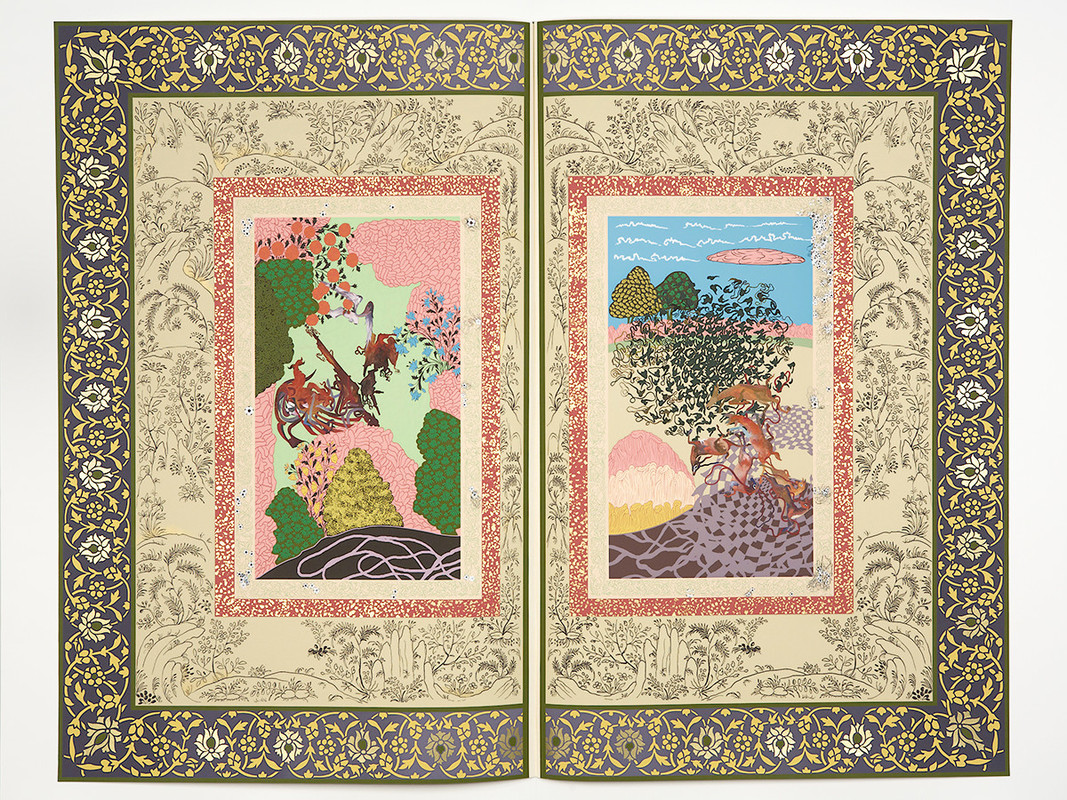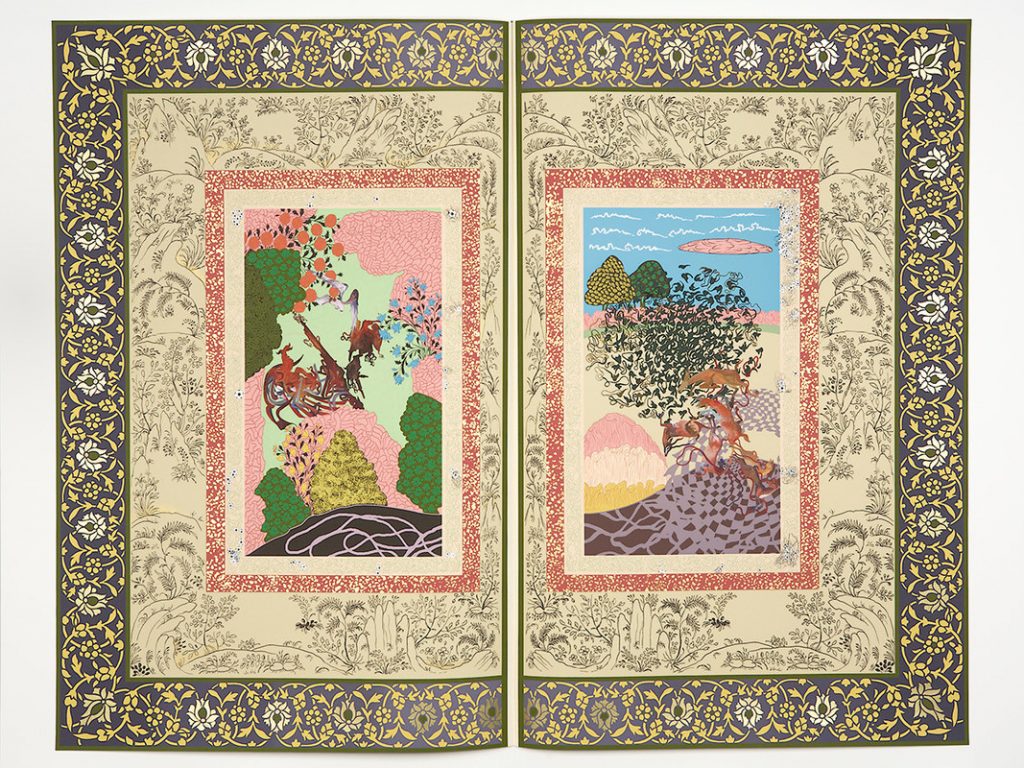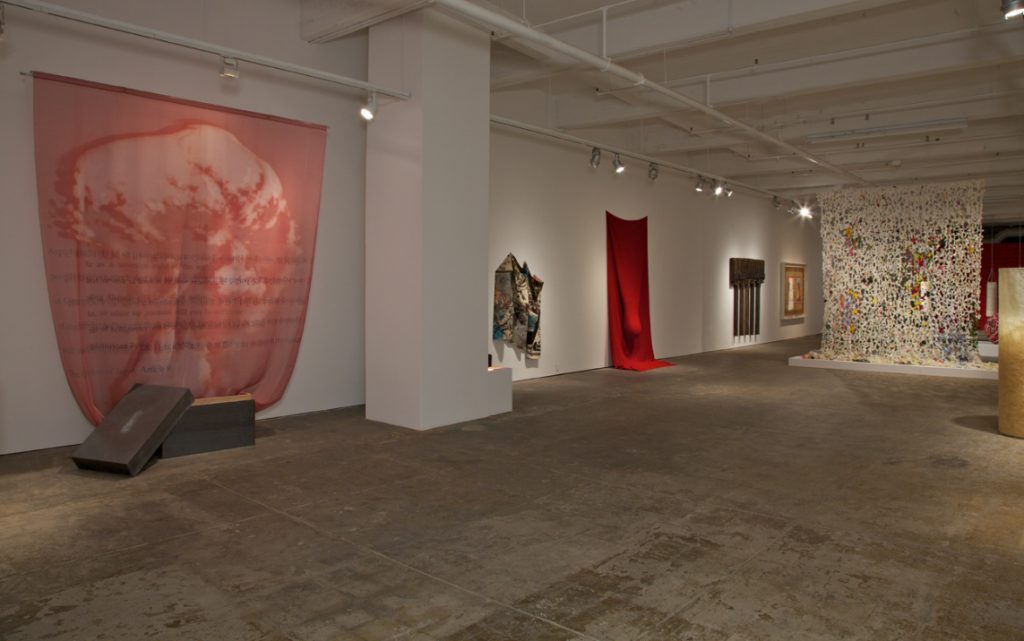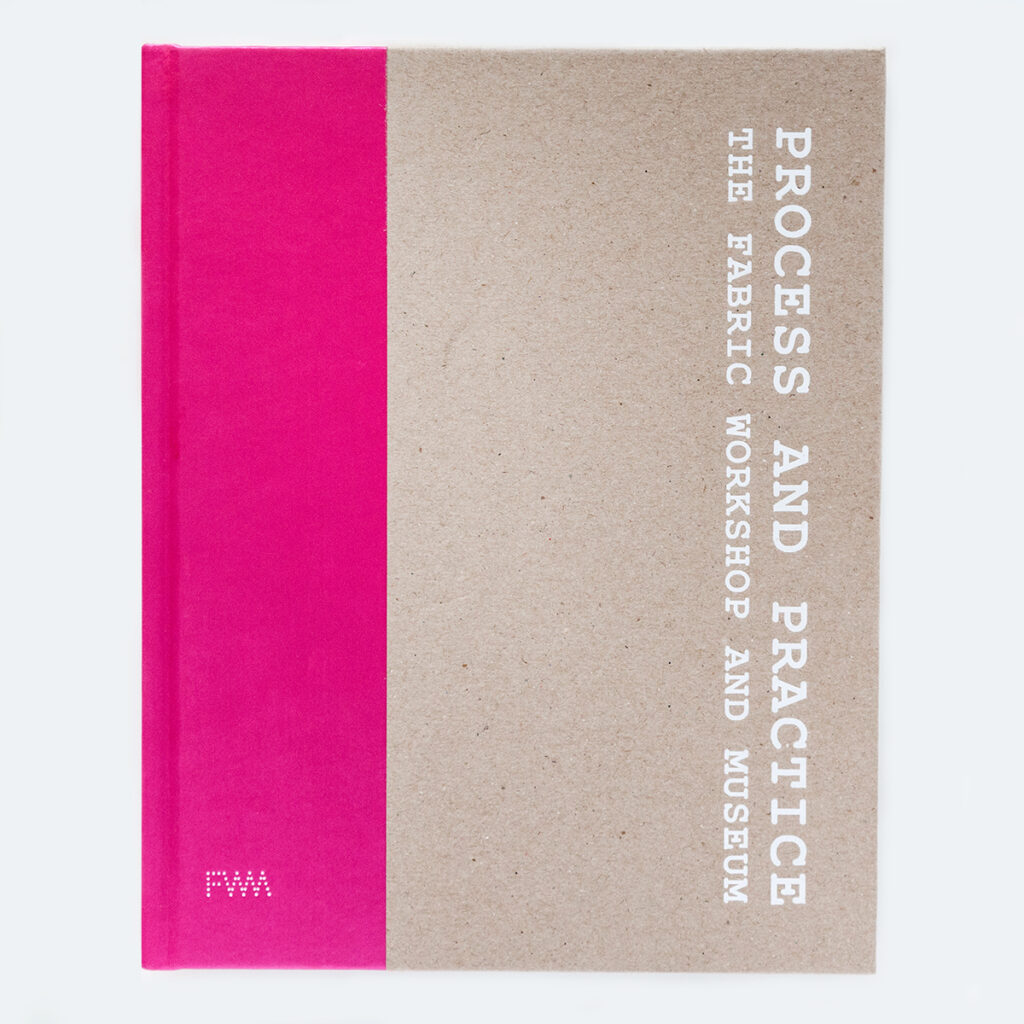Layers of figurative and abstract imagery coat the surfaces of Shahzia Sikander’s work whether on paper, in paintings, or in digital animation. Embedded in each layer are open-ended narratives that reveal multifaceted and constantly morphing relationships. Sikander appropriates imagery from universal modern motifs and from her own visual vocabulary, sometimes further abstracting symbols from her previous works. Raised as a Muslim in Lahore, Pakistan, she explores the thresholds of Hindu and Muslim culture, often combining tropes and iconography from both. By adding modern and non-traditional elements to the manuscript artform, Sikander forces the viewer to reconcile conflicting sensibilities hidden within beautifully rendered landscapes.
Predefined icons become open-ended narratives as Sikander abstracts and removes context from the imagery in her work. Cross-cultural images—such as sports equipment, animals, landscape and pattern—incongruously co-exist alongside traditional Southeast Asian motifs organized in swirling and tumbling compositions. Sikander presents identity as “fluid and unfixed”; oppositions such as west/east, white/black, white/brown, modern/ traditional, presence/ absence, beginning/end, and conscious/unconscious are questioned in an ongoing dialog with tradition. Sikander’s visual vocabulary reintroduces disparate deep-rooted allegories and illustrates them as an abstracted, shared, indeterminate and simultaneously dissolving and evolving story.
Her residency at FWM was an exploration of scale, as well as, she remarked, “a successful marriage of two materials” that have previously been independent in her work. Inspired by traditional manuscript form, The Illustrated Page Series #1 (2005-6) is the first of three unique works on paper in this series made in collaboration with FWM. By utilizing the process of screen-printing in conjunction with gouache hand painting, Sikander magnified the imagery and vocabulary of the work for which she is well known.




